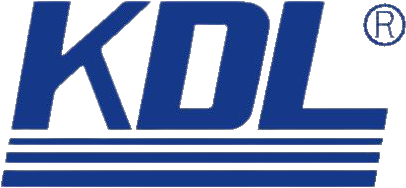
Managing diabetes effectively depends on several factors, and choosing the right insulin syringe size is one of the most important decisions you’ll make. With the variety of syringe sizes and features available, you might feel overwhelmed about where to start. This guide will walk you through everything you need to know to confidently select the best insulin syringe size for diabetes that works best for your needs.
Understanding Insulin Syringes Sizes
Insulin syringe aren’t all the same. Each type is designed to meet specific needs based on your dosage and comfort preferences. To make the right choice, it helps to understand the key components:

Barrel Size
The syringe barrel determines how much insulin the syringe can hold. Common sizes include:
- 0.3ml: Best for doses under 30 units.
- 0.5ml: Designed for doses between 30 and 50 units.
- 1ml: Ideal for higher doses over 50 units.
Needle Length
The length of the needle matters, as it determines how far the insulin is delivered into your tissue. Options include:
- Short (4mm–6mm): For minimal pain and ease of use.
- Medium (8mm): Offers balance for most users.
- Long (10mm–12mm): For specific injection sites or body types.
Gauge (Needle Thickness)
The gauge refers to the thickness of the needle. A higher gauge means a thinner needle, which can reduce discomfort during injections.
By understanding these components, you’ll be better equipped to match a syringe to your needs.
How Syringe Size Impacts Insulin Dosage and Delivery
Selecting the correct syringe size directly affects your insulin dosage accuracy and overall experience.
- Dosage Accuracy: A syringe that’s too small might require multiple injections to deliver the full dose, while one that’s too large can make it harder to measure smaller amounts precisely.
- Comfort: The right needle length and gauge minimize pain while ensuring insulin is delivered to the correct tissue layer.
Using the wrong syringe size could lead to dosage errors or discomfort, so it’s worth taking the time to choose carefully.
Comparing Insulin Syringe Sizes: Which Is Right for You?
When choosing insulin syringe size, consider your insulin dosage and the precision needed. Here’s a comparison of the three main insulin syringe sizes to help you decide:
- Small Sizes (0.3ml):
- Best for: Doses under 30 units, often used by children or individuals with low daily insulin requirements.
- Pros: Easy to handle and reduces waste for smaller doses.
- Cons: Limited capacity for higher doses.
- Medium Sizes (0.5ml):
- Best for: Moderate doses between 30 and 50 units.
- Pros: Offers flexibility for those who may adjust their dosage occasionally.
- Cons: Slightly larger than smaller syringes, which may feel bulkier for some users.
- Large Sizes (1ml):
- Best for: Higher doses above 50 units or those who prefer fewer injections.
- Pros: Can hold large amounts, reducing the need for multiple injections.
- Cons: May feel cumbersome for new users or those with smaller hands.
When making your choice, think about your typical dosage, injection frequency, and what feels comfortable for you to handle. If you’re ready to take control of your diabetes management with a reliable and trusted syringe, explore the KDL Insulin Syringe range. We offer options tailored to your needs, so you can feel confident and comfortable with every injection.
Key Factors to Consider When Choosing an Insulin Syringe
Choosing the right syringe isn’t just about finding what’s available—it’s about what works best for your needs. Here’s what you should think about:
1. Insulin Dosage Requirements
Your daily insulin dose plays a major role in determining the syringe size. For example, a 0.3ml syringe works best for doses under 30 units, while a 1ml syringe is better for doses over 50 units. Choosing a syringe with appropriate capacity ensures you don’t risk under- or overdosing.
2. Needle Gauge and Length
- Gauge refers to the thickness of the needle. Higher gauge numbers mean thinner needles, which can reduce pain.
- Length depends on your body type and injection site. For example, shorter needles may work well for leaner individuals, while longer needles may be more effective for those with thicker skin.
3. Frequency of Injections
If you’re injecting insulin multiple times a day, comfort and ease of use matter. Smaller syringes with thinner needles may be more comfortable, while larger syringes might be better suited for higher doses administered less frequently.
4. Ease of Handling
If you have vision issues or limited hand dexterity, consider syringes with clear markings or ergonomic designs. They make it easier to measure and inject insulin accurately.
5. Doctor’s Recommendations
Your healthcare provider knows your medical history and can offer guidance tailored to your specific needs. Always consult with them before making a final decision.
Common Misconceptions About Insulin Syringe Size
You might encounter some myths about insulin syringes that can make choosing the right size confusing. Let’s clear up a few common misconceptions:
- Myth 1: A larger syringe is always better for high doses.
- Truth: Larger syringes might not allow for the precision needed for smaller doses. It’s about matching size to need, not always going bigger.
- Myth 2: Needle length doesn’t affect the injection.
- Truth: A needle that’s too short might not deliver the insulin to the correct layer of tissue, potentially affecting how your body absorbs it.
- Myth 3: One syringe size fits all users.
- Truth: Everyone’s needs are different, and there’s no universal solution. Personalization is key.
Top Recommendations for Insulin Syringes
When it comes to insulin syringes, quality and reliability are essential. Here are some features to look for:
- Precision Measurement: Look for syringes with clear, easy-to-read markings.
- Comfortable Needles: Choose a needle gauge and length that minimizes discomfort.
- Minimal Waste: Syringes with low-dead-space designs ensure you use as much insulin as possible.
KDL Insulin Syringe are an excellent choice, offering a range of sizes and features like high-precision barrels and thin needles for a smooth injection experience. Whether you need a small syringe for low doses or a large one for less frequent injections, KDL has you covered.
Tips for Using Insulin Syringes Effectively
To get the most out of your syringe, follow these tips:
- Store Syringes Safely: Keep them in a clean, dry place to avoid contamination.
- Practice Proper Injection Technique: Rotate injection sites to prevent skin irritation and ensure insulin absorption.
- Dispose of Syringes Responsibly: Use a sharps container for used syringes to protect others and the environment.
Conclusion
Choosing the right insulin syringe size can make a big difference in your diabetes management. By understanding syringe sizes, comparing options, and considering your needs, you can find a syringe that ensures accurate dosing and a more comfortable experience.
As a manufacturer and supplier of top-quality insulin syringes, KDL is committed to offering products designed for accuracy, comfort, and ease of use.

